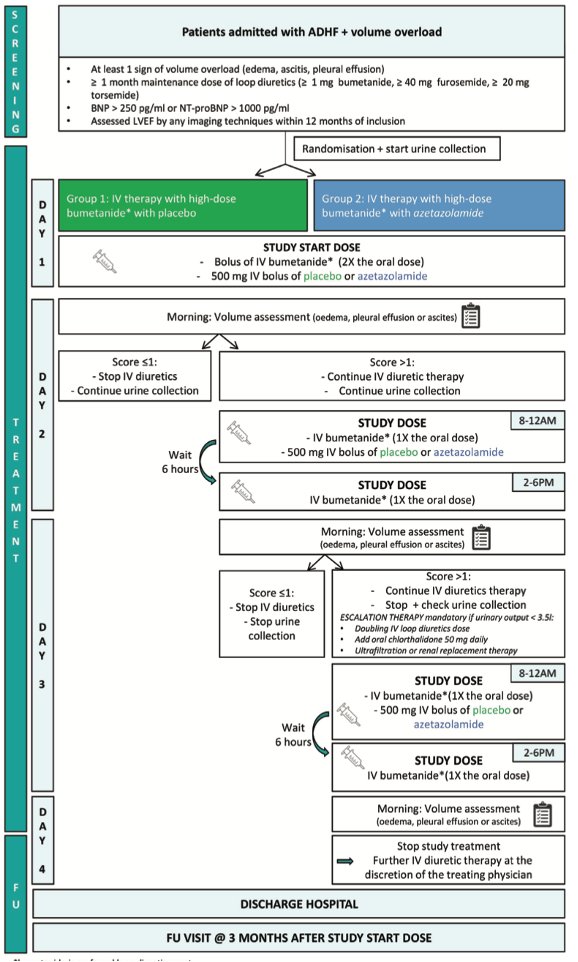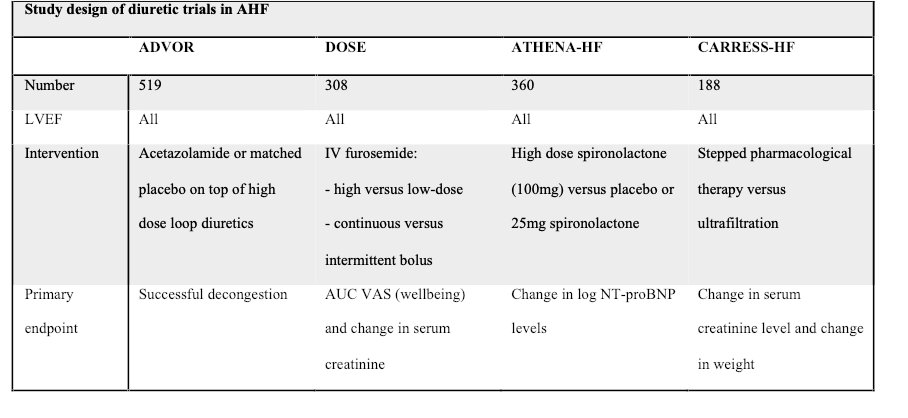
Results of the randomized #ADVOR trial are soon coming your way! It's the largest diuretic trial in acute #heartfailure ever conducted (N=519) and will test acetazolamide on top of loop diuretics. Recruitment is finished and full database lock is anticipated. Find out more (1/9). 

Appropriate and thorough decongestion is class I recommendation in HFA-ESC guidelines (2/9).
academic.oup.com/eurheartj/arti…
#Cardiotwitter #Cardiology #FOAMed #Cardiorenal #MedEd #MedTwitter #Nephrology #ADVOR #HeartFailure2022 #HFA_ESC
academic.oup.com/eurheartj/arti…
#Cardiotwitter #Cardiology #FOAMed #Cardiorenal #MedEd #MedTwitter #Nephrology #ADVOR #HeartFailure2022 #HFA_ESC

Only 15% of AHF included in DOSE trial were decongested after 72 hours of high-dose loop diuretic (LD) therapy (3/9).
nejm.org/doi/full/10.10…
nejm.org/doi/full/10.10…

The HFA diuretic consensus document on the use of diuretics supports a combinational diuretic use as a potential strategy to offset diuretic resistance with accompanying persistent congestion (4/9).
onlinelibrary.wiley.com/doi/full/10.10…
onlinelibrary.wiley.com/doi/full/10.10…

Thiazides work distal in nephron and might counterbalance distal hypertrophy with chronic use of high dose LD but are associated with worse outcome even after extensive propensity matching (5/9)
onlinejcf.com/article/S1071-…
onlinejcf.com/article/S1071-…

Acetazolamide inhibits the sodium reabsorption in the proximal tubules of the nephron which is the site where most sodium is reabsorbed and therefore boosts LD efficacy (6/9)
pubmed.ncbi.nlm.nih.gov/26226699/
pubmed.ncbi.nlm.nih.gov/26226699/

#ADVOR is a randomized, pragmatic, multicenter, double-blind, placebo-controlled, clinical trial comparing high-dose LD + placebo vs high-dose LD + acetazolamide in AHF with volume overload, high-NTproBNP on maintenance LD (7/9).
onlinelibrary.wiley.com/doi/10.1002/ej…
clinicaltrials.gov/ct2/show/NCT03…
onlinelibrary.wiley.com/doi/10.1002/ej…
clinicaltrials.gov/ct2/show/NCT03…

#ADVOR Prim endpoint: effective decongestion after diuretic therapy without the need to escalate for poor diuretic efficacy = very important endpoint reflecting an important guideline + associated with good outcomes.
#ADVOR Sec endpoints: length of stay, HFH/mortality, QOL (8/9)
#ADVOR Sec endpoints: length of stay, HFH/mortality, QOL (8/9)

Have a look @ methods paper of #ADVOR (9/9).
onlinelibrary.wiley.com/doi/10.1002/ej…
@WilsonTangMD @FH_Verbrugge @petra_nijst @PieterMartensMD @JeroenDauw @kevin_damman @jozinetm @AlexMebazaa @MarcoMetra @Filippatos @robmentz @ISNkidneycare @BWGHF @mewton_nathan @KCETrials @uhasselt @DukeHFDoc
onlinelibrary.wiley.com/doi/10.1002/ej…
@WilsonTangMD @FH_Verbrugge @petra_nijst @PieterMartensMD @JeroenDauw @kevin_damman @jozinetm @AlexMebazaa @MarcoMetra @Filippatos @robmentz @ISNkidneycare @BWGHF @mewton_nathan @KCETrials @uhasselt @DukeHFDoc

• • •
Missing some Tweet in this thread? You can try to
force a refresh












